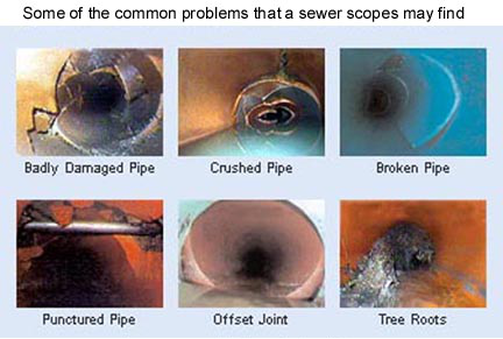Sewer lines are critical parts of the plumbing system, yet they often attract the least amount of attention until major problems occur. Broken and clogged sewer lines add up to significant damage in a short amount of time. When contaminated water doesn’t drain properly, you could deal with mold and bacterial growth in critical areas of your home and business. Not to mention the sheer inconvenience of having to deal with backed-up toilets and sinks.

Common Sewer Line Issues
The good news is that you can often catch sewer line issues early when you know to look out for these common signs of a problem with the main drain pipe.
Smelling Foul Odors
A sewage backup in the pipes often contains contaminated waste that includes decaying organic matter. One might detect this as a foul odor that emanates from the drains when you use them. When you have clear sewer lines, one should never notice a smell that comes through the pipes. Always mention unpleasant and new odors that you notice while showering or washing dishes in the sink. These smells could indicate a big problem with the sewer lines.
Slow Draining Tubs and Sinks
Other fixtures in your business or house drain out through the same main sewer pipe as the toilets. Bathtubs and sinks also develop clogs that can get lodged further down the line. It is best to use strainers in the upper drains to keep food debris, hair, and other materials going down into the pipes as a general rule. If you notice that a drain runs slowly, then arrange to have the clog removed before it leads to a major flood in the house.
Frequent Toilet Backups
An occasional clogged toilet might be caused by using too much toilet paper, but you should also worry if it happens regularly. Large clogs can build up in sewer lines over a long period of time. This is especially true if people put items down the drain that don’t belong there. Feminine hygiene products and flushable wipes are two common culprits for serious clogs that develop deep within the main drain pipe.
Noticing Lush Spots In the Lawn
A lawn filled with green grass is desirable for most landscaping plans, but there are times when one might need to investigate spots with fast growth. Sewer line breaks leak water into the surrounding ground containing organic materials that act as a fertilizer. Soggy areas in your grass can also indicate a plumbing leak that needs repair. If these areas grow extra fast and greener than the surrounding vegetation, it could be due to a crack in the pipes. When you call for sewer line repair, Dallas technicians can come out with special equipment to identify where a crack may exist below the ground surface.
Discovering Mold and Mildew
The sewer lines running from the fixtures and out of your home travel through the walls. In highrise buildings, you might also have sewer lines that run through the ceiling. Cracks in hidden pipes can cause water leaks in areas that may not always make sense. For instance, you might discover a wet spot with microbial growth along with the ceiling of a bottom floor. Finding mildew or mold without an obvious cause often means a hidden pipe leak is somewhere nearby.
Gurgling Sounds
A smooth-running drain should allow the water to flow through it without too much noise. Bubbling or gurgling sounds indicate that something might be changing how the water flows through the pipe. In older homes with large trees growing nearby, this is often a sign that roots might be growing into the drain pipes. This is most common in buildings that have clay or concrete sewer lines. Replacing or repairing these pipes with newer materials prevents major breaks in the pipes and nasty clogs.
Have you noticed these signs of a problem with your home or commercial building’s main sewer line? Signature Home Inspection provides sewer line inspections in Orange County and surrounding counties. Give us a call or head online to request a free quote and inspection today. Our team of inspection technicians can quickly identify the issue and provide repairs that prevent serious damage to your property.
